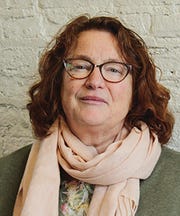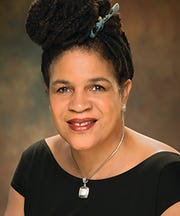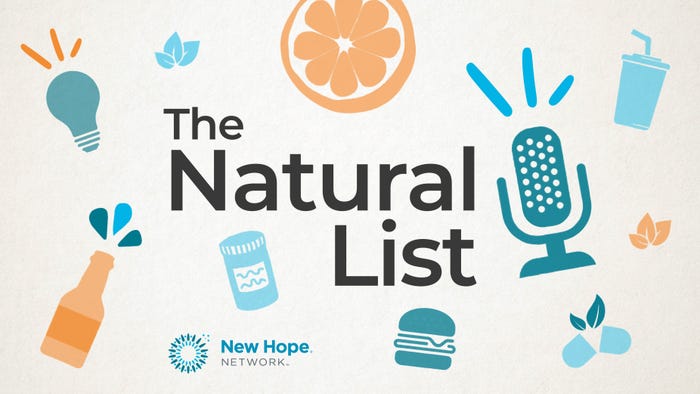.png?width=700&auto=webp&quality=80&disable=upscale)
Weigh in: How can I successfully hire for diversity and inclusion?
In the United States, people who have traditionally been invisible—because of their ethnicity, disability, gender identity or other reason—are becoming more visible. See how you can include them as employees, which will make more customers feel welcome.
March 5, 2020

No matter the industry, research shows that companies comprised of diverse teams outperform those with homogenous workforces by multiple measures. Inclusive businesses tend to be more innovative and generate greater revenue, for example.
They also attract bigger and broader consumer bases. Because their teams mirror what America really looks like, these companies are more in tune with the needs and wants of a wider audience. To help you increase diversity and inclusion, three experts offer their advice.
Company culture and talent consultant
 Cassie Nielsen,
Cassie Nielsen,
vice president of talent at VMG Partners, a private equity firm focused on natural products
Craft an inspiring EEO statement. Equal employment opportunity statements can be a great way to signal that you care deeply about building a diverse team, but most companies miss this opportunity. They simply put “equal opportunity employer” on their job applications or use basic “we don’t discriminate” language on their websites. OK, great, they won’t break the law—but that’s not very inspiring. Instead, use language that is more inclusive and visionary to appeal to a broader audience.
Neutralize job descriptions. In terms of attracting diverse candidates, 300- to 700-word job descriptions perform best, in part because they list fewer requirements. Men apply for jobs when they meet just 60 percent of the requirements, believing they’ll figure the rest out as they go, whereas women and underrepresented populations apply only when they meet 100 percent of the requirements, so they self-select out. Also avoid gendered language when possible or at least have a balance of masculine words (aggressive, assertive) and feminine words (teach, support).
Prioritize a growth mindset. Job descriptions written with a fixed mindset— using phrases such as “looking for top-tier talent” or “the candidate is best in class”— convey that candidates must have a certain skill set and experience to excel. The problem is applicants who are “already great” are probably products of systematic privilege. Descriptions written with a growth mindset—“you love learning” or “you are committed to improvement”—imply that you believe candidates can grow and develop. This will attract a more diverse candidate pool because it signals that it’s not about what they’ve already done, it’s about their ability to grow and learn.
Retailer
 Elizabeth Liddiard Wozniak,
Elizabeth Liddiard Wozniak,
human resources manager, Seward Community Co-op,
Minneapolis, Minnesota
Make a companywide commitment. To increase the diversity of your workforce, the most important thing is to have commitment from all levels of the organization. It needs to involve the CEO, general manager or whoever is on top—or a group of people. We’ve layered this mission into everything we do so it’s not just one person working on diversity and inclusion. This work never ends, by the way.
Partner with community groups. Job sites are fine, but they won’t necessarily attract a diverse candidate pool, while your own website may attract mainly people like you. Instead, partner with community organizations that work with underrepresented populations. In the black community, for instance, churches are very important. When we opened a new store in a historically black neighborhood, we spoke at churches to let people know we were here and hiring, and we door-knocked. We also held a career fair at the community center across from the store. That drew about 400 people, many from the neighborhood.
Invest in diversity training. In co-ops, there can be a mentality of “all are welcome … but once you get here, act like us.” But people have different styles of thinking, communicating and expressing themselves, and we want the “everyone welcome” sign above our entrances to be true. Since we didn’t have a diversity expert in house, we hired a consultant and took the intercultural development inventory to evaluate ourselves as a group and as individuals to assess how well we were able to see differences, be flexible and be uncomfortable. Then we trained our managers on intercultural conflict styles and formed committees to revamp how we hire, what skills are actually necessary to work at a co-op and how we orient and retain employees.
Diversity expert
 MaryAnne Howland,
MaryAnne Howland,
founder and CEO of Ibis Communications Global Diversity Leadership Exchange
Focus on company culture first. Before hiring, first look at the culture of your workplace. Building a culture of inclusion is the most important step toward becoming a diverse company—if inclusion is the ethos, diversity is the result. Do a full assessment to see if your people are truly ready to embrace differences. Because even if you have an effective hiring campaign, if your culture isn’t welcoming, you’ll have fast turnover. Then those who leave will talk about their negative experience.
Encourage new hires to share. Our company hires for skill set and experience, but we also want people to bring their whole selves to work. That’s why we invite our entire team to interview candidates so they can meet each person, see them in their best light and learn what they can bring to the table. Then once hired, we ask them to tell us about their personal interests or what they’re most proud of. If they make the best meatloaf in the world, for example, we’ll invite them to make it for the group. This creates common ground and a shared experience. To welcome diversity in this way is a beautiful thing.
Ensure you are ADA friendly. Many businesses overlook people with disabilities. Make sure your workplace has doorways, ramps, cubicles and desks that are set up for wheelchairs or people who are blind. Is your environment friendly for those hard of hearing—what is the noise level? These assessments take time, so create a diversity committee to think through all this. Know that if you hire people from underrepresented communities for leadership roles, it speaks volumes. When customers see an attitude of inclusion, that message reverberates into the community and more people will want to shop with you because the vibe is right.
About the Author
You May Also Like




